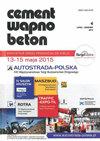Material properties of the light mass bricks from an 800 year old Heritage site in India
IF 0.6
4区 工程技术
Q4 CONSTRUCTION & BUILDING TECHNOLOGY
引用次数: 0
Abstract
Restoration and preservation of Heritage Structures in any countryis a challenging task and sometimes requires urgent attention. Moreover, it is important for sustenance of culture and heritage of the society. But many times, it is very diffi cult to find matching materials used in the past and hence due to use of available cementitious materials there can be degeneration of existing material. In view of this, there is a need to characterize these ancient materials and develop alternate materials with almost similar characteristics. With this knowledge, an alternate material similar in mineral composition and physical properties need to be developed, which will not have compatibility issues during and after repair. In the present study, the material characterization of an ancient floating brick at an Indian Heritage site was examined using modern analytical techniques like SEM-EDS, XRD and FTIR. In addition, the physical properties like specific gravity, bulk density, voids ratio and porosity were also determined. From the analysis, it could be confirmed that the bricks were light in weight due to the pores content and could float in water due to the non-interconnected porosity. Also, the presence of quartz, alumina and hematite from SEM-EDS analysis confirmed that these bricks were made of firing the clay, at lower temperatures, to induce pores. This low temperature firing of clay was supported by FTIR analysis indicating the presence of Si-O bond that would have disappeared at higher temperature.来自印度800年历史遗址的轻质砖的材料特性
文物建筑的修复和保护在任何国家都是一项具有挑战性的任务,有时需要迫切关注。此外,它对社会文化和遗产的维持也很重要。但很多时候,很难找到与过去使用的材料相匹配的材料,因此由于使用现有的胶凝材料,可能会导致现有材料的退化。鉴于此,有必要对这些古代材料进行表征,并开发具有几乎相似特征的替代材料。有了这些知识,需要开发一种在矿物成分和物理性质上相似的替代材料,这种材料在修复期间和修复后都不会有兼容性问题。在本研究中,使用SEM-EDS、XRD和FTIR等现代分析技术,对印度遗产地的古代浮砖的材料特征进行了研究。此外,还测定了材料的比重、容重、空隙率、孔隙率等物理性质。通过分析可以确定,由于孔隙含量的原因,砖的重量较轻,并且由于孔隙不相互连接,砖可以漂浮在水中。此外,通过SEM-EDS分析,石英、氧化铝和赤铁矿的存在证实,这些砖是由粘土在较低温度下烧制而成,以诱导气孔。FTIR分析支持这种低温烧制粘土,表明存在Si-O键,该键在高温下会消失。
本文章由计算机程序翻译,如有差异,请以英文原文为准。
求助全文
约1分钟内获得全文
求助全文
来源期刊

Cement Wapno Beton
CONSTRUCTION & BUILDING TECHNOLOGY-MATERIALS SCIENCE, COMPOSITES
CiteScore
1.30
自引率
28.60%
发文量
0
审稿时长
>12 weeks
期刊介绍:
The Publisher of the scientific bimonthly of international circulation, entitled "Cement-Wapno-Beton" ["Cement-Lime-Concrete"], is the Fundacja Cement, Wapno, Beton [Foundation Cement, Lime, Concrete]. The periodical is dedicated to the issues concerning mineral setting materials and concrete. It is concerned with the publication of academic and research works from the field of chemistry and technology of building setting materials and concrete
 求助内容:
求助内容: 应助结果提醒方式:
应助结果提醒方式:


